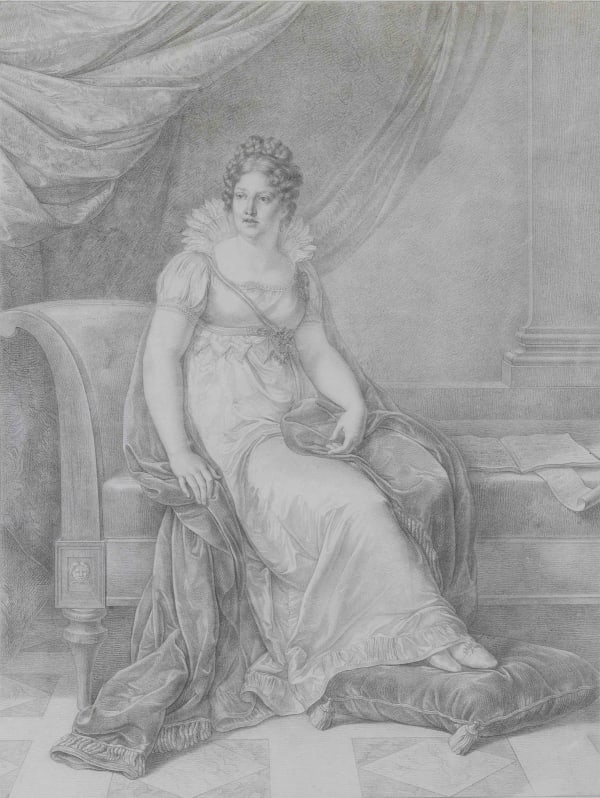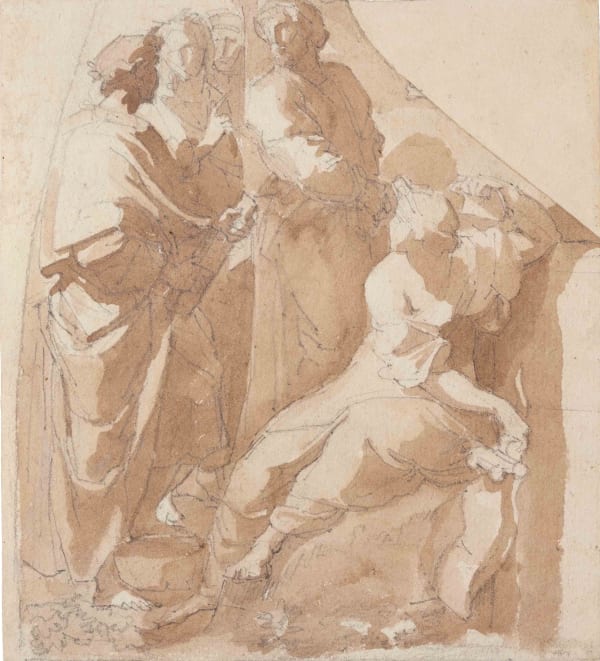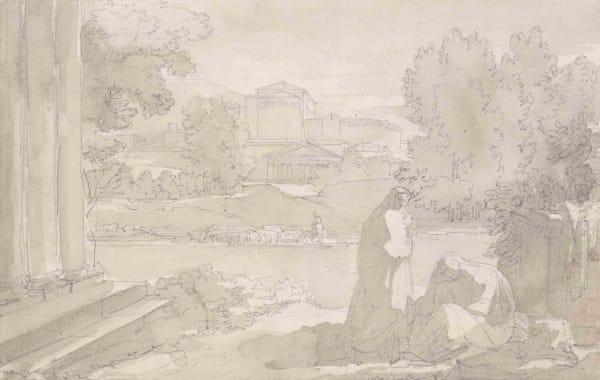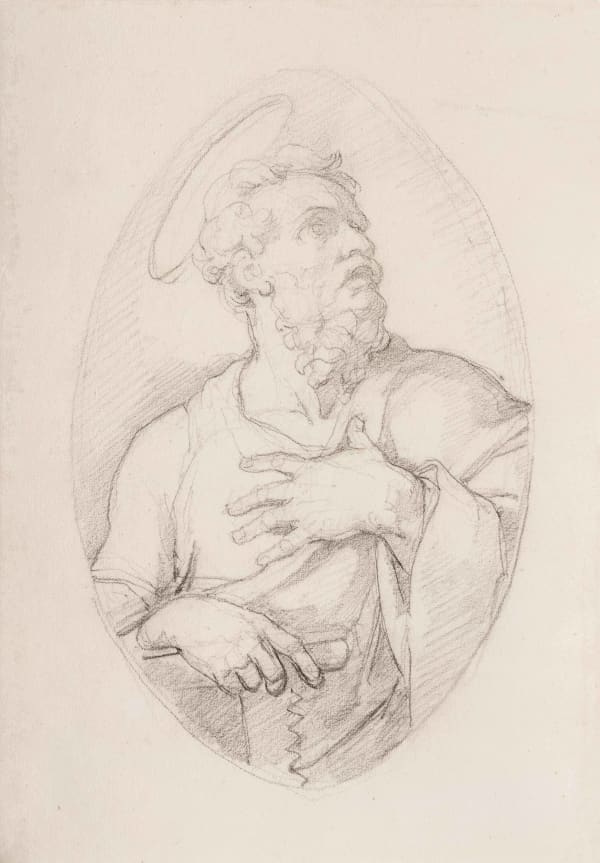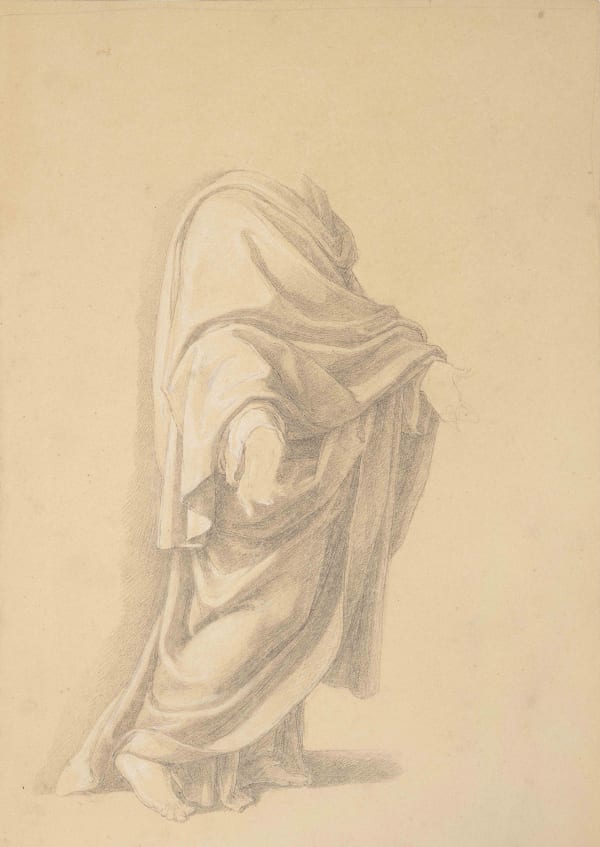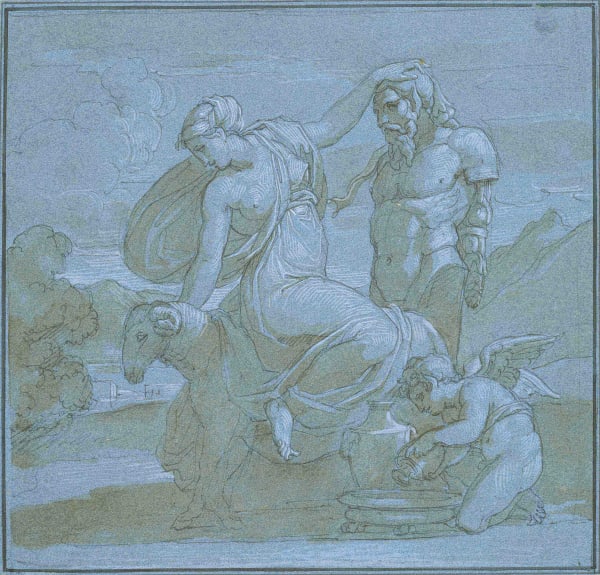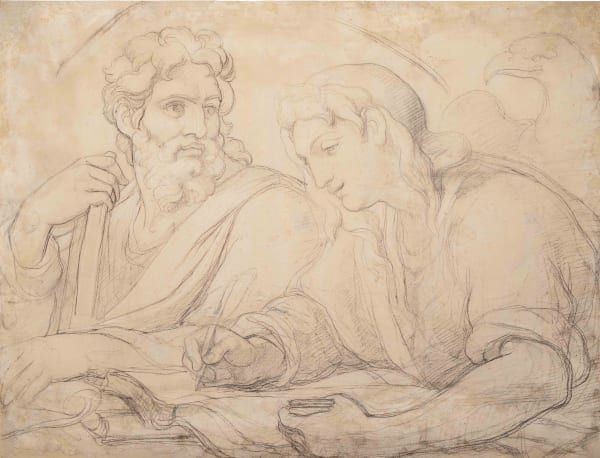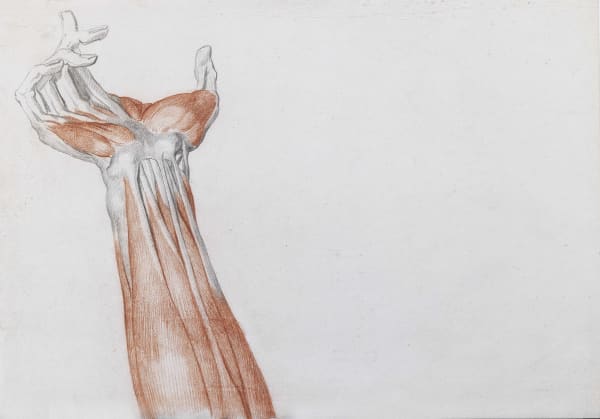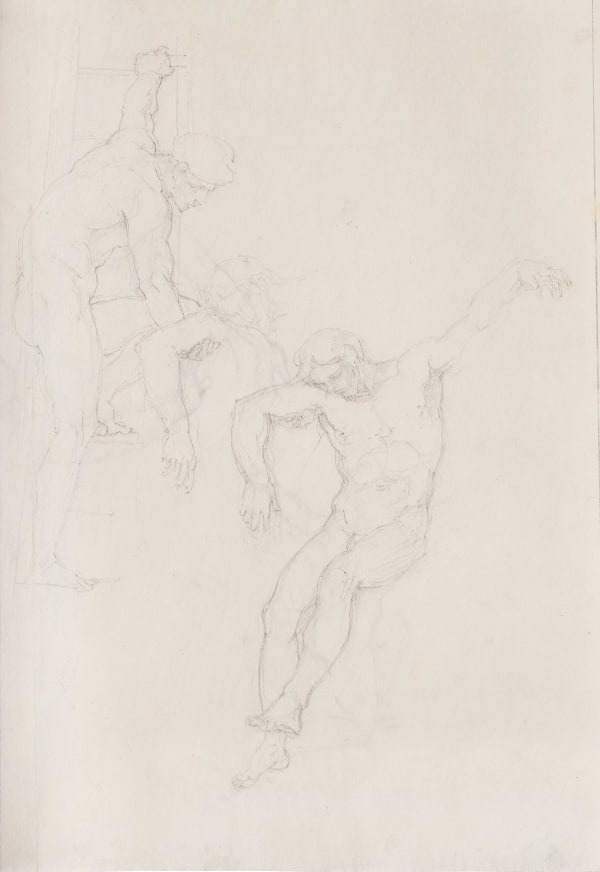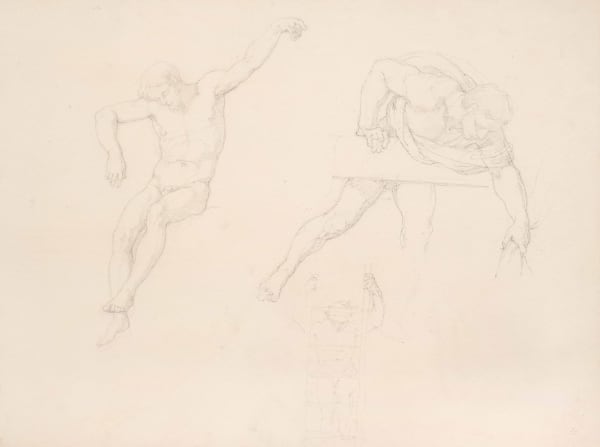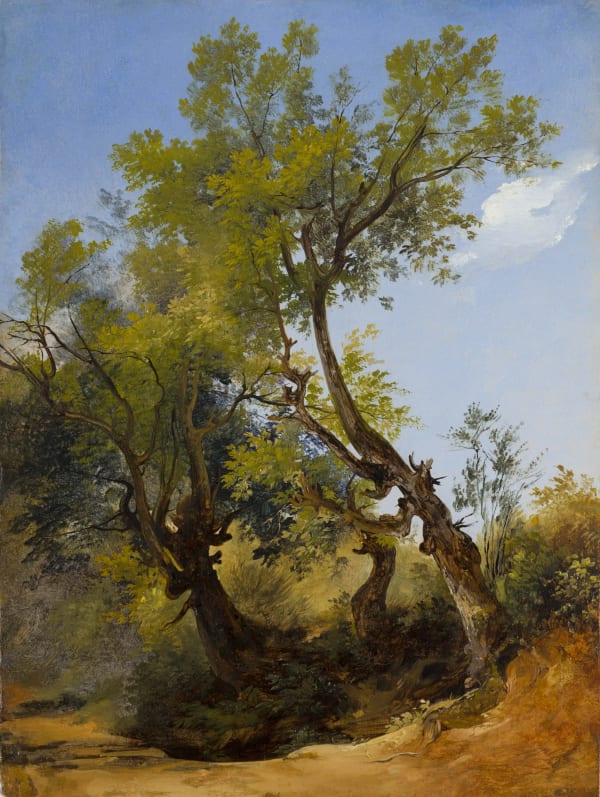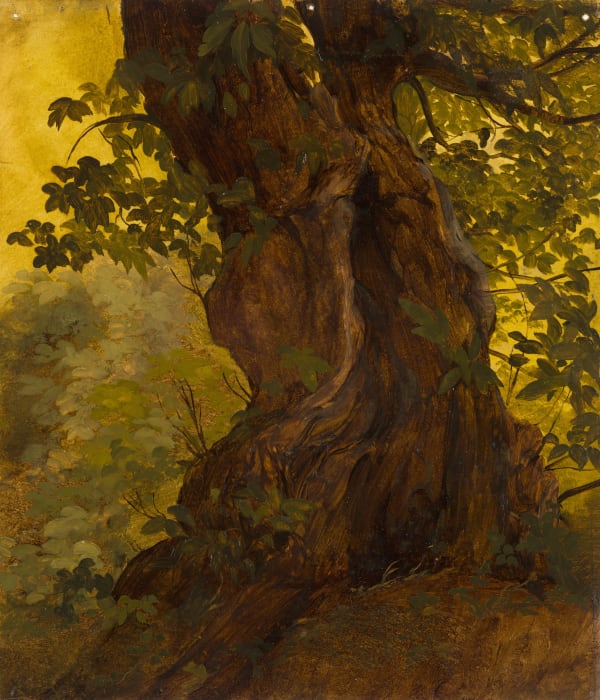I CAMUCCINI: TRA NEOCLASSICISMO E SENTIMENTO ROMANTICO
I CAMUCCINI
TRA NEOCLASSICISMO E SENTIMENTO ROMANTICO
AN INTERNATIONAL EXHIBITION CELEBRATES TWO MAJOR ITALIAN ARTISTS
Two galleries and three events in the European capitals of art – Rome and Paris – for a single large travelling exhibition with an international tone, dedicated to the undisputed protagonist of Roman Neoclassicism, Vincenzo Camuccini, and his son Giovanni Battista, a sensitive interpreter of the romantic landscape painted en plein air.
“I Camuccini. Tra Neoclassicismo e sentimento romantico” is the exhibition with which Antonacci Lapiccirella Fine Art of Rome and Maurizio Nobile Fine Art of Paris (which also have branches in Bologna and Milan) will be opening their new exhibition season. An event which unites not only these two galleries but also the prestigious European capitals that host them, where the neoclassical ideal was born and found fertile ground between the mid-eighteenth century and the early decades of the nineteenth century.
The exhibition will begin at the Antonacci Lapiccirella Fine Art Gallery in Rome. In its second appointment, and the first in Paris, the exhibition will be hosted by the renowned Galerie Eric Coatalem, as a part of the Fine Arts Paris international fair, to then continue at Maurizio Nobile Fine Art.
1 October - 28 October 2021 | opening: 30 September
Antonacci Lapiccirella Fine Art, Rome
5 - 11 November 2021 | opening: 4 November
at Galerie Eric Coatalem, Paris
16 November - 18 December 2021 | opening: 15 November
Maurizio Nobile Fine Art, Paris
-
 VINCENZO CAMUCCINIThe departure of Atilius Regulus, c. 1802
VINCENZO CAMUCCINIThe departure of Atilius Regulus, c. 1802 -
 VINCENZO CAMUCCINIPortrait of Maria Luisa de Bourbon, 1817 ca.
VINCENZO CAMUCCINIPortrait of Maria Luisa de Bourbon, 1817 ca. -
 VINCENZO CAMUCCINIAppius Claudius. Sketch for the left-hand side of 'Death of Virginia', c. 1802
VINCENZO CAMUCCINIAppius Claudius. Sketch for the left-hand side of 'Death of Virginia', c. 1802 -

VINCENZO CAMUCCINI
Ecuba scopre il cadavere del figlio Polidoro
-

VINCENO CAMUCCINI
Alceo, Corinna, Petrarca, Anacreonte e Saffo
-

VINCENZO CAMUCCINI
Paesaggio classico con figure
-

VINCENZO CAMUCCINI
Ingrasso di Malatesta Baglioni in Perugia
-

VINCENZO CAMUCCINI
La lupa capitolina
-

VINCENZO CAMUCCINI
La morte di Cesare
-

VINCENZO CAMUCCINI
Morte di Virginia
-

VINCENZO CAMUCCINI
Testa di Signifero
-

VINCENZO CAMUCCINI
San Simone
-

VINCENZO CAMUCCINI
Studio di panneggio della Vergine
-

VINCENZO CAMUCCINI
Figura di dannato
-
 VINCENZO CAMUCCINIInebriated Bacchante
VINCENZO CAMUCCINIInebriated Bacchante -
 VINCENZO CAMUCCINIFoot studies
VINCENZO CAMUCCINIFoot studies -

VINCENZO CAMUCCINI
Gli Evangelisti Giovanni e Marco
-

-

VINCENZO CAMUCCINI
Gli Evangelisti Matteo e Luca
-

VINCENZO CAMUCCINI
Tra Apostoli
-

VINCENZO CAMUCCINI
Madre e figlia esultanti
-
 VINCENZO CAMUCCINIForearm and hand
VINCENZO CAMUCCINIForearm and hand -
 VINCENZO CAMUCCINIDorsal region, shoulder, arm, forearm and hand
VINCENZO CAMUCCINIDorsal region, shoulder, arm, forearm and hand -
 VINCENZO CAMUCCINIHip, thigh, knee, leg and foot
VINCENZO CAMUCCINIHip, thigh, knee, leg and foot -
 VINCENZO CAMUCCINIThigh, knee, leg and foot
VINCENZO CAMUCCINIThigh, knee, leg and foot -

-

VINCENZO CAMUCCINI
Studio del Cristo morto e di Nicodemo
-

VINCENZO CAMUCCINI
Studio del Cristo Morto e di Figura
-
 GIOVANNI BATTISTA CAMUCCININotturno sul lago di Albano dalla chiesa dei riformati, c. 1840
GIOVANNI BATTISTA CAMUCCININotturno sul lago di Albano dalla chiesa dei riformati, c. 1840 -
 GIOVANNI BATTISTA CAMUCCINIPaesaggio con tre alberi, c. 1840
GIOVANNI BATTISTA CAMUCCINIPaesaggio con tre alberi, c. 1840 -
 GIOVANNI BATTISTA CAMUCCINIStudio di albero, c. 1840
GIOVANNI BATTISTA CAMUCCINIStudio di albero, c. 1840 -
 GIOVANNI BATTISTA CAMUCCINIRocchette in Sabina. Santa Maria dei Monti, c. 1840
GIOVANNI BATTISTA CAMUCCINIRocchette in Sabina. Santa Maria dei Monti, c. 1840 -
 GIOVANNI BATTISTA CAMUCCINISan Paolo in Albano dal convento dei Cappuccini, c. 1840
GIOVANNI BATTISTA CAMUCCINISan Paolo in Albano dal convento dei Cappuccini, c. 1840 -
 GIOVANNI BATTISTA CAMUCCINISbocco dell'emissario del lago di Albano alle mole di Castel Gandolfo , c. 1840
GIOVANNI BATTISTA CAMUCCINISbocco dell'emissario del lago di Albano alle mole di Castel Gandolfo , c. 1840 -
 GIOVANNI BATTISTA CAMUCCINIScorcio del lago di Albano dal sentiero per Palazzolo, c. 1840
GIOVANNI BATTISTA CAMUCCINIScorcio del lago di Albano dal sentiero per Palazzolo, c. 1840 -
 GIOVANNI BATTISTA CAMUCCINISentiero nel bosco, c. 1840
GIOVANNI BATTISTA CAMUCCINISentiero nel bosco, c. 1840 -
 GIOVANNI BATTISTA CAMUCCINIIl cosiddetto Bosco Sacro nella valle della Caffarella, c. 1840
GIOVANNI BATTISTA CAMUCCINIIl cosiddetto Bosco Sacro nella valle della Caffarella, c. 1840
-
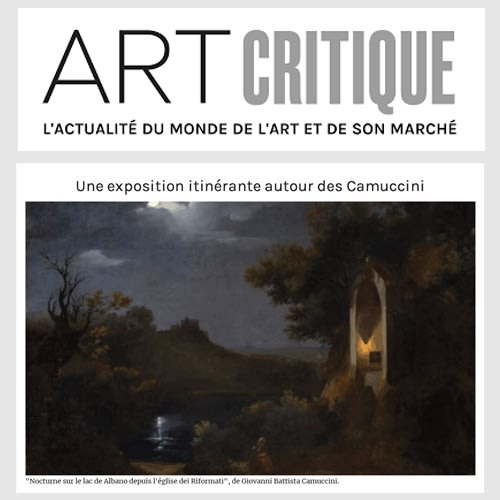
ART CRITIQUE
August 2, 2021 This link opens in a new tab. -
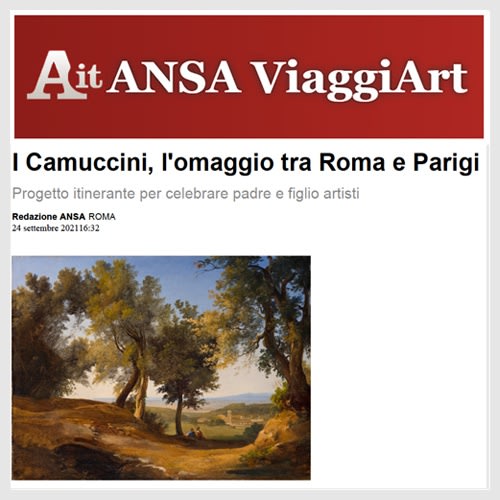
ANSA
September 21, 2021 This link opens in a new tab. -
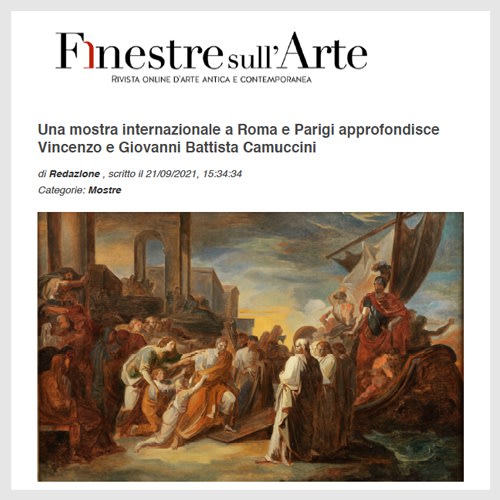
FINESTRE SULL'ARTE
September 21, 2021 -
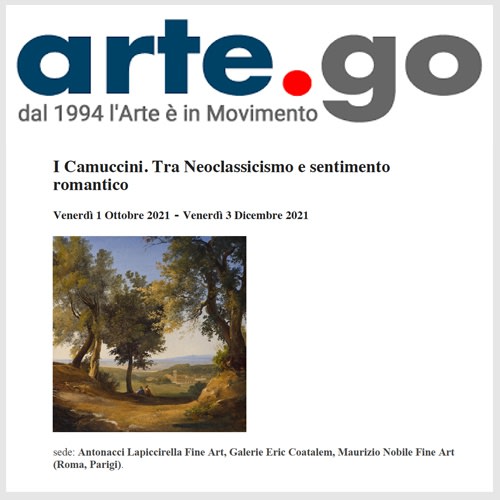
ARTE.GO
September 27, 2021 This link opens in a new tab. -
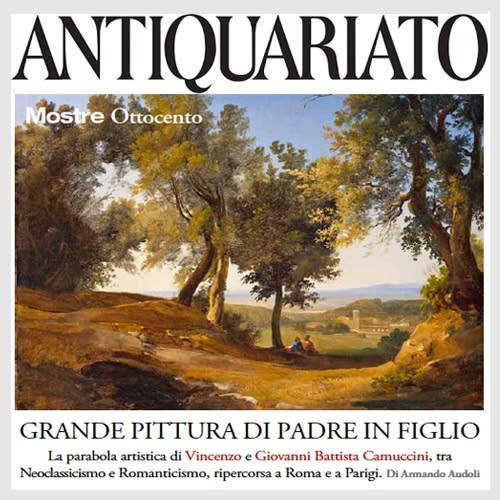
ANTIQUARIATO
September 29, 2021 This link opens in a new tab. -

ARSLIFE
September 29, 2021 This link opens in a new tab. -
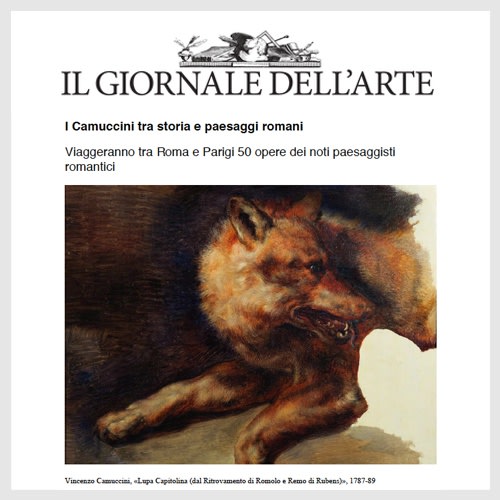
GIORNALE DELL'ARTE
October 1, 2021 This link opens in a new tab. -
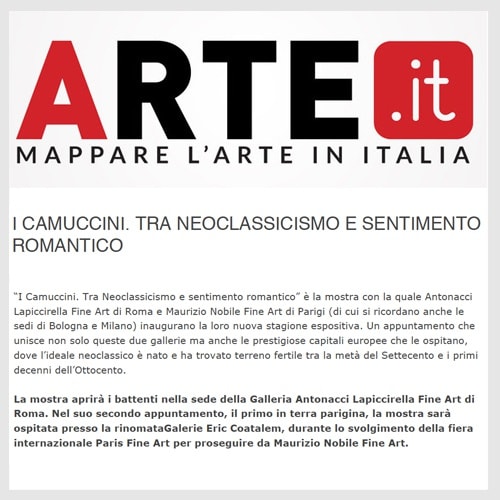
ARTE.IT
October 6, 2021 This link opens in a new tab. -
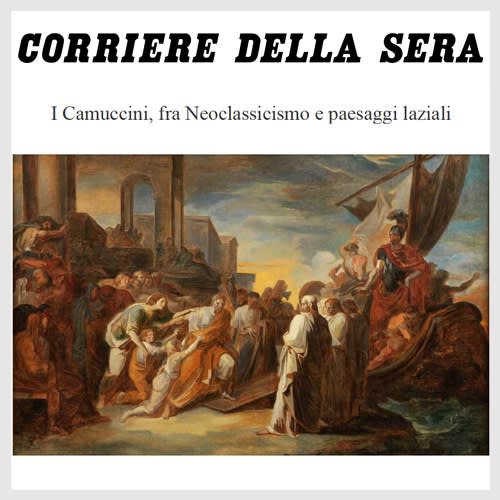
CORRIERE DELLA SERA
October 6, 2021 This link opens in a new tab. -
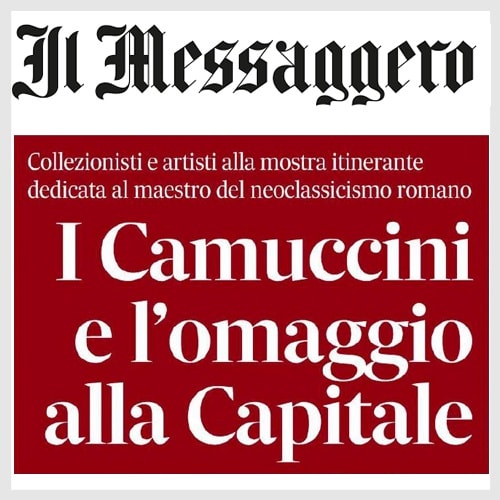
IL MESSAGGERO
October 6, 2021 This link opens in a new tab. -
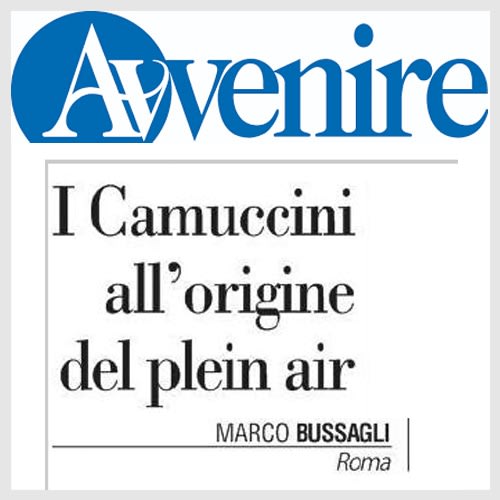
AVVENIRE
October 8, 2021 This link opens in a new tab. -
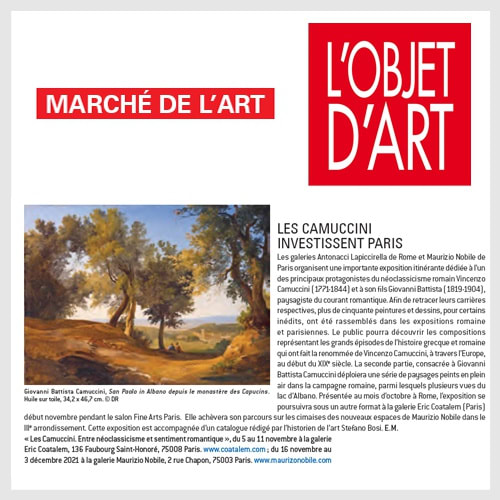
L'OBJECT D'ART
November 1, 2021 This link opens in a new tab. -

PARIS DIARY BY LAURE
November 7, 2021 This link opens in a new tab. -
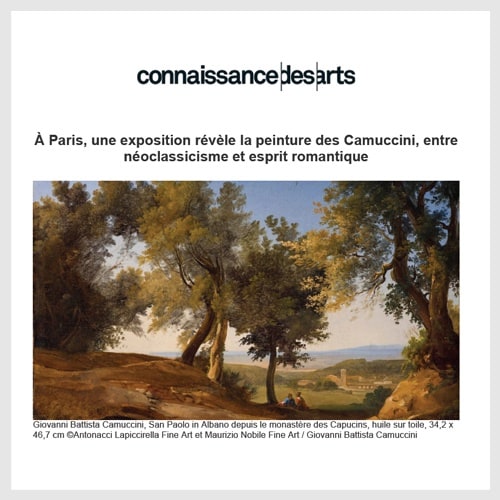
CONNAISSANCE DES ARTS
November 8, 2021 This link opens in a new tab. -

Coupe-File Art
November 10, 2021 This link opens in a new tab. -

LA TRIBUNE DE L'ART
November 30, 2021 This link opens in a new tab. -
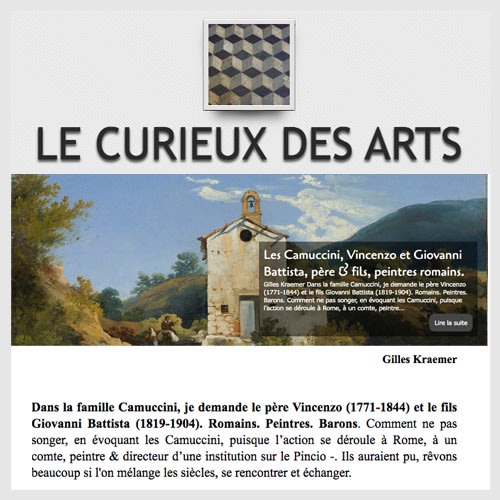
LE CURIEUX DES ARTS
December 2, 2021 This link opens in a new tab. -

IL SOLE 24ORE
December 12, 2021 This link opens in a new tab.
The exhibition includes a selection of over fifty works through which the artistic story of the two Camuccini will be narrated. Starting with Vincenzo’s long and glorious career, which led him to become one of the greatest exponents of European Neoclassicism, as well as a witness to one of the most intense periods in the history of Rome. In fact, his work was deeply influenced by the political milieu of the capital, in which he was actively engaged.
Vincenzo’s pictorial style changed when he found a clear role for himself, that of an interpreter and witness of the Empire and the Restoration, when he also came to a realization and to believe less in the belief that the Athens of Pericles and the Rome of the virtuous times could survive in the Republic.
And so an overall appraisal of who Camuccini really was becomes compelling. An appraisal which this exhibition will attempt to afford through the works on display, including an extraordinary series of unpublished drawings dating back to the artist’s formative period which saw the young Vincenzo first practise on the works of the great masters of the past and later improve his own inventiveness by attending the Accademia dei Pensieri, founded in the capital by Felice Giani in the early 1790s.
In the exhibition, the Roman history paintings enjoy pride of place – it was thanks to these that Camuccini won international acclaim, and in the capital was rapidly considered their most modern interpreter in comparison with the conventional late-eighteenth-century interpretation used hitherto. Among these works stands out Appius Claudius, a sketch for the monumental Death of Virginia (Naples, Capodimonte Museum) commissioned by Frederick August Hervey, Bishop of Derry and 4th Earl of Bristol, and the Departure of Atilius Regulus painted for the Duke of Blacas. The exhibition is rounded off by a series of religious studies related to ecclesiastical commissions, such as the Saints Simon and Jude for an altar of St. Peter’s Basilica in the Vatican.
The exhibition is also entrusted with telling the story of Giovanni Battista Camuccini’s landscape vocation – whose historical-artistic relevance reached beyond national borders, to the point that many of his works are kept in leading foreign museums, including the National Gallery in London, the Metropolitan of New York and the Toledo Art Museum – through a series of captivating views of the Lazio countryside. A vocation developed in the wake of the specialist Giambattista Bassi (1784-1852), who in Rome revived the tradition of the classic seventeenth-century landscape, soon becoming one of the leading interpreters of painting inspired by nature. Under his guidance, Camuccini began painting en plein air, becoming acquainted with the circle of painters influenced by the precepts of Pierre-Henri de Valenciennes (1750-1819), such as Gilles-François Closson (1796-1842), Achille-Etna Michallon (1796-1822) and George Augustus Wallis (1770-1847). Giovanni Battista mainly depicted the countryside around Rome and the areas near Lake Albano, where he routinely went on holiday with his family.
Like many other painters dedicated to the plein air technique, Giovanni Battista was fascinated by the effects of light on lakescapes and by the warm-hued views typical of the Lazio countryside and, in strict adherence to Valenciennes’ precepts, he also devoted time to studying such naturalistic details as individual trees and plants, as documented by some of the paintings in the exhibition.
His activity as a landscape artist continued until the early 1850s, when he decided to abandon it and devote himself exclusively to taking care of his family affairs.
CATALOGUE
The exhibition will be accompanied by a catalogue published by SAGEP - Genoa. Essay by Dr. Stefano Bosi, art historian and specialist of the period.
Number of pages: 96 pages. All the works exhibited are reproduced. Price 25 euros.


